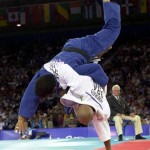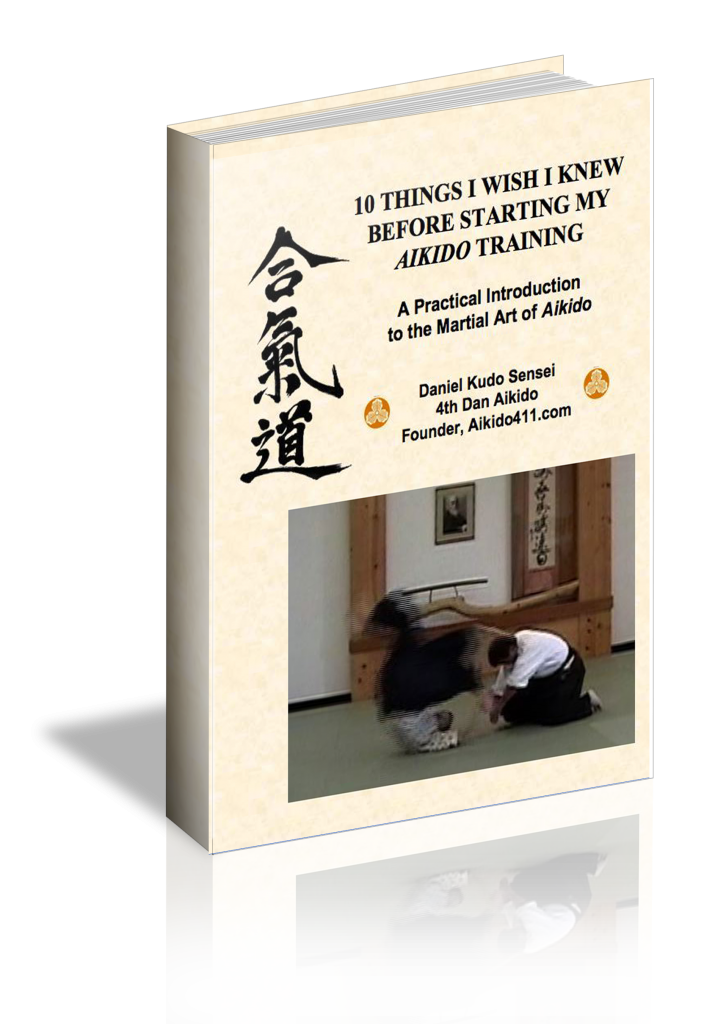
Aikido Technique: Simiar to Judo?
Aikido Techniques: Yoko Ukemi Finding the Answers to Common Problems in a Sack of Rice
Aikido Techniques: “But I’m afraid of heights!”
Aikido techniques are part of the martial arts and, as with any contact sport, carries with it a certain risk of injury which is often the reason why people leave the art. The key is that we learn in steps. Tiger Woods could probably tell me exactly what movements are involved in his swing – yet, even if we knew it exactly, could we reproduce it perfectly? Of course not, because we have not mastered each part of the swing as he has. So it is with ukemi that I could teach you everything I have learned about how to fall but even if you knew it, you have not practiced it enough to fall exactly the way I do. In fact, those students that do not learn these movements in the proper sequence will commit certain errors because they are not comfortable in knowing exactly how to fall without pain or discomfort. This “fear of falling” causes us to do predictable things.
Aikido Techniques: “Look Ma, I got hands!”
Picture yourself walking to your table at a restaurant laughing and talking with one of your friends. As you pass by my table my table, I stick out my leg and trip you. If you were not trained in falling, your upper body will pitch forward causing you to fall like vase. Most people with extend one or both arms to prevent using the face to break the fall. Your straight arm hits the tile floor absorbing all of the shock resulting in a shattered wrist, a broken arm or collar bone and maybe all of the above. Most students who have not had sufficient time to develop the confidence needed to be relaxed in a fall will reach out their arms in this same way in an instinctive move to protect the body.
Aikido Techniques: Rolling like a block
Imagine rolling a white cue ball across a pool table and then a child’s building block. The results are strikingly different. The ball rolls smoothly while the block’s movement is jagged as each edge of it slips along the felt as it bounces along. Yoko ukemi, of course, is not rolling but this analogy points out the fact that if one part of the body, say the elbow or the hip, absorbs a large portion of the overall energy upon contact with the mat. This is one of the reasons why new student experience the “owieee” moment on the mat and has frequently caused unnecessary down time from training.
Just hold me, Darling. A new student, fearful of this type of fall, may hold on to the nage in a vain attempt to keep from hitting the ground. This will result in another version of one part of the body (often the feet) hitting first and absorbing most of the impact.
Aikido Techniques: Find the answer in a sack of rice.
The key to avoiding these problems is a relaxed body which falls in the correct way. Relaxation comes through confidence and confidence comes from practice. If one drops a plank from 3 feet, it will likely bounce back and forth making a lot of noise before it settles on the ground. Do the same thing with a sturdy sack of rice and it will settle in one motion with just a swishing sound. Why? Because the plank is rigid and the rice sack is supple. This concept is summarized in the next article.

am not a martial artist and am grown up now.aikido is my favourite sport plus tai boxing.i have watched and read ur stuff on the net and really looking 4ward 2 meet u and get some training.like i said am no martial artist and not a kid anymore but i love this sport and will like 2 know it .ave learned some basic moves from ur teachings on the net and hope 2 learn more.
Omarr
Aikido is unique in that it can be practiced by people of all ages. I have attended a black belt examination of a person that was in his sixties with gray hair and a relative lack of flexibility that is common among people of this age group. I believe that one’s training never ends, and that makes Aikido a great art to chose as a lifetime pathway. You will learn not only the physical aspect of the art, but also the spiritual dimensions. One of the goals of O-Sensei, the founder of Aikido, was World Peace. Begin your journey in your own way and let the art enrich your life. Warmest regards…